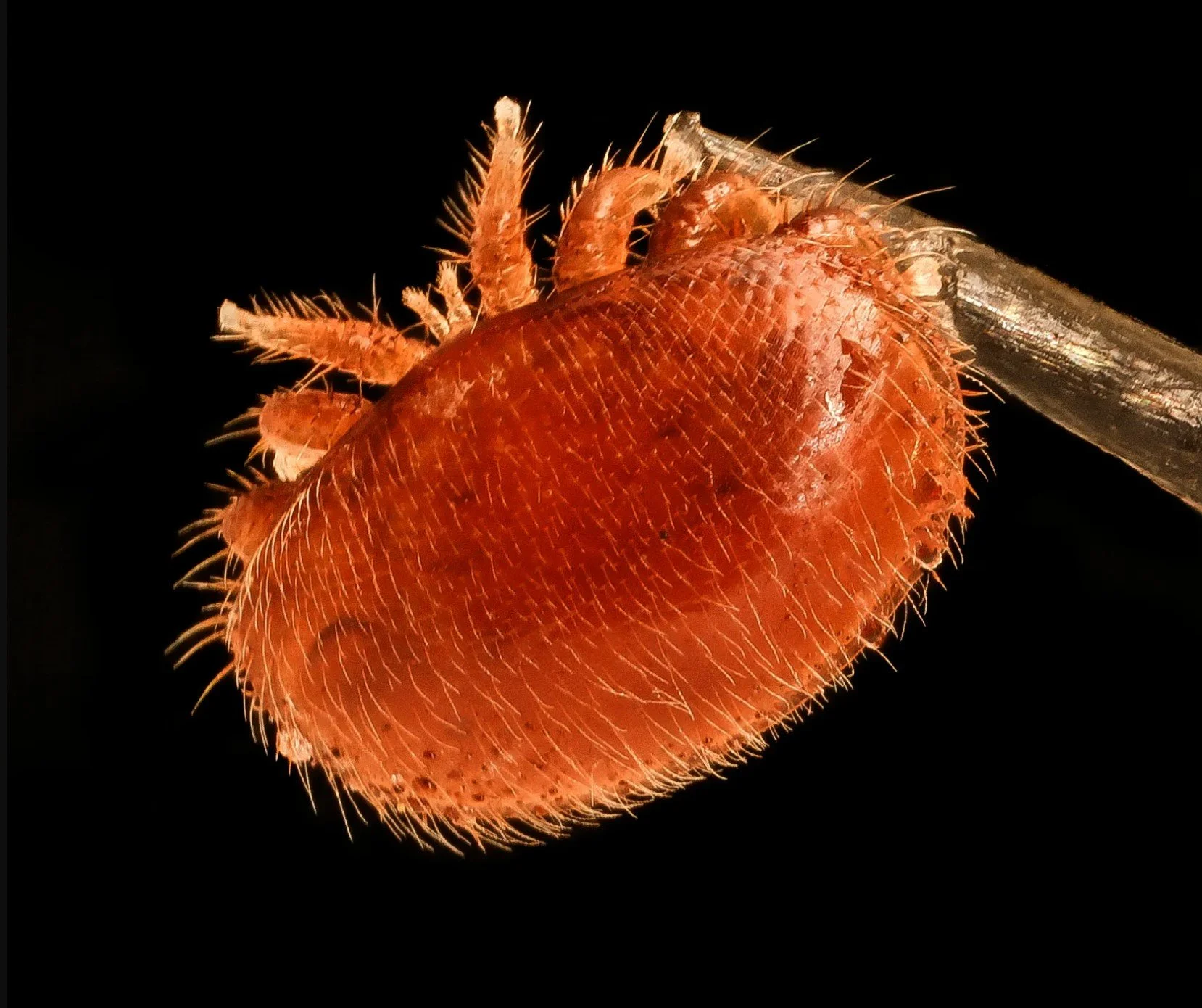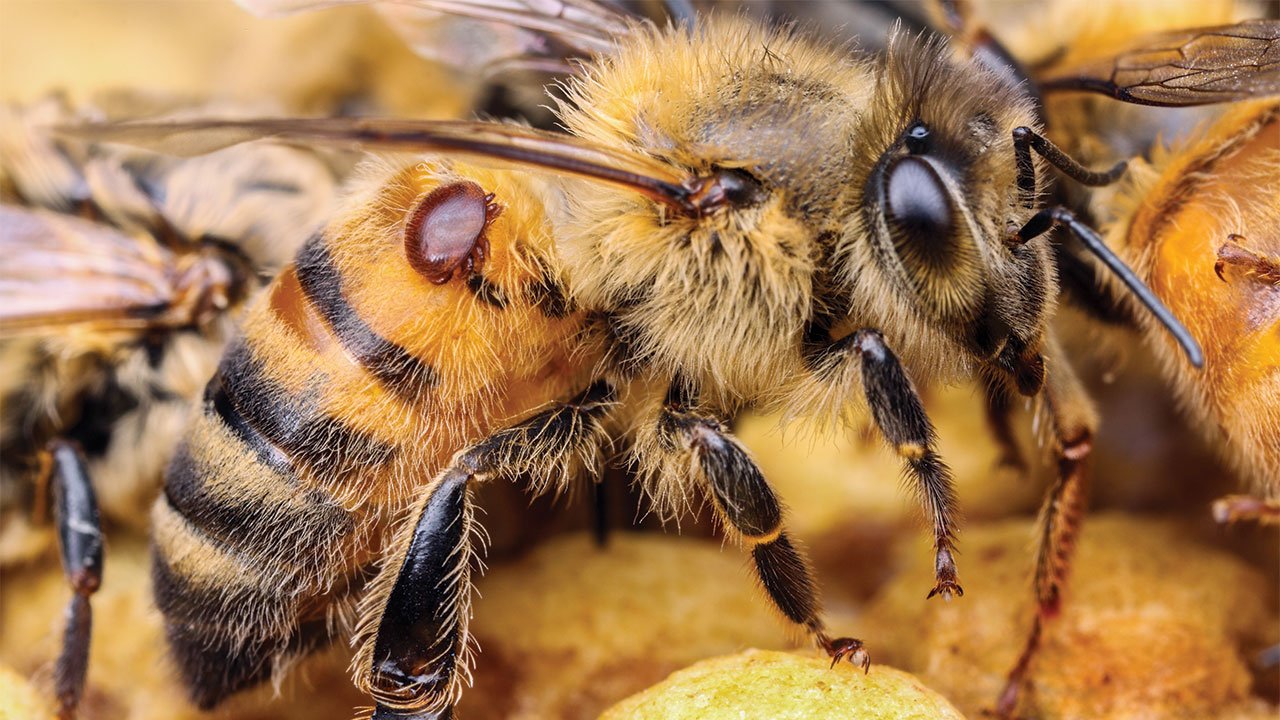What the heck is a Varroa Mite?
Maybe you have heard of these little devils in news about bees, or from beekeepers. But what is a Varroa (pronounced va-row-ah) Mite?
Varroa Mites are anthropods, just visible to the naked eye, specialized to act as parasite on honey bees. They co-evolved with the Eastern Honey Bee – Apis ceranae. Our western Honey Bee – Apis melifera only met them globally between the 70s-90s. They have not had the thousands of years living together that Eastern Honey Bees have experienced – allowing them to reach a balance where both species survive.
Varroa mites feed on the fat bodies of honey bees. Fat bodies are more than just fat in bees. They are organs that synthesis important compounds for the bees to function. The fat bodies cannot be regenerated. Mite bites do lasting damage to the bees – spreading viruses, bacterial infections, and shortening their lifespan. This is especially problematic in regions with winters. When the queen stops laying eggs for the winter, the “winter bees” need to survive until she starts laying again. If their lifespan is shorter due to mite infestation…. they often don’t make it.
Varroa mites are obligate parasites and must be on a bee to reproduce. Beekeepers are working furiously to find good, human and bee health safe treatment methods that the mites won’t become resistant to. Bee breeders are also working to perpetuate strong genetic lines of bees that seem to keep mite reproduction under control through virus resistance and behavioral adaptation.
At NectarShare, dealing with the mites is our biggest challenge!




